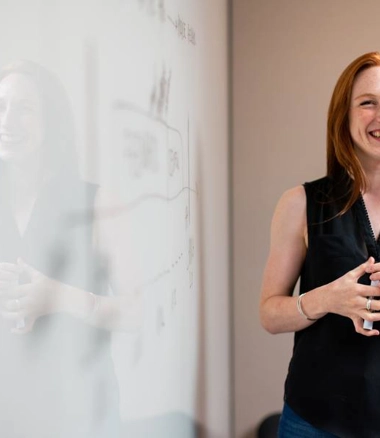
2024 heralds a paradigm shift for Architecture, Engineering, and Construction (AEC), with Artificial Intelligence (AI) leading the charge. Beyond adopting new tech; we are witnessing a fundamental rethink of our approach to creating, from the drawing board to the skyline. The integration of AI is transforming our built environment, offering smarter, more sustainable solutions that meet the dynamic needs of society. Reflecting on 2023, it's clear that we've crossed a threshold where technology isn't just an adjunct but the backbone of innovation in the AEC sector. But how is it impacting the industry and shaping engineering careers?
The AI Revolution in Design and Planning
AI's impact is nowhere more visible than in the realms of design and planning. No longer is design confined to intuition and experience. AI-driven algorithms are now essential collaborators, pushing the limits of what's possible in architectural creativity and functionality. These tools bring insights gleaned from vast data analyses, ensuring designs are not just visually impressive but also supremely functional and sustainable.
On the structural side, AI's precision and foresight in planning are revolutionising how we view the integrity and feasibility of our designs, significantly mitigating risks and ensuring adherence to the highest quality and safety standards.
Machine Learning: A Game Changer in Construction
Machine Learning (ML), AI's progeny, is redefining construction management and execution. By identifying patterns in large datasets, ML is streamlining construction processes, forecasting project delays, and optimising resource allocation. Automated machinery, powered by ML, performs tasks with unprecedented precision, enhancing site safety and efficiency. This shift towards smarter construction practices is setting new industry benchmarks.
AI in Maintenance and Facility Management
Beyond the build phase, AI is revolutionising maintenance and facility management. Predictive maintenance, powered by AI, foresees the need for repairs, ensuring infrastructure longevity and safety. In facility management, AI optimises energy consumption and conducts life cycle analyses, affirming the AEC industry's commitment to sustainable and resilient infrastructure.
Practical AI Use Cases in AEC
AI's real-world applications are transforming daily operations in the AEC sector. AI-assisted site analysis, automated design compliance, and safety monitoring on construction sites are just a few examples of how AI is enhancing productivity, accuracy, and safety in construction projects.
Bridging the Skill Gap: The AI Imperative for AEC Professionals
As AI becomes embedded in the AEC industry, addressing the professional skill gap is critical. Upskilling in AI and ML is imperative for staying competitive. Specialised training programs and continuous professional development are key for AEC professionals to leverage AI fully in their work.
For professionals looking to delve into the intersection of AI and design engineering, particularly within the building services industry, there are several notable courses and resources available:
Neural Concept's Insights on AI in Engineering Design: While not a course, Neural Concept provides valuable insights into how AI is transforming engineering design. It highlights the use of machine learning (ML) and computer vision (CV) tools in design processes, particularly emphasizing the application of AI in solving engineering design problems and the benefits of using CAE surrogates for real-time predictive analytics. This resource is beneficial for understanding the role of AI in engineering design and how it can enhance efficiency and innovation.
AI for Designers Course by the Interaction Design Foundation (IxDF): This course is structured to cover various aspects of AI in design, including generative AI, collaborative design with AI assistance, and prompt engineering. It also touches upon using AI tools for research, ideation, prototyping, testing, and overcoming challenges like bias in AI. This comprehensive course is designed for designers who wish to integrate AI into their workflow, offering practical advice on crafting effective text prompts for design and leveraging AI for prototyping and user testing.
CIBSE Training Courses: The Chartered Institution of Building Services Engineers (CIBSE) offers a range of training options, including remote, on-demand, face-to-face, and corporate training sessions. These courses cover various topics relevant to building services engineering, providing an excellent opportunity for professionals to learn about the latest standards, including TM66, which focuses on creating a circular economy in the lighting industry. CIBSE's training programs are designed to accommodate the learning needs of professionals at different stages of their careers, ensuring access to up-to-date knowledge and skills in the field.
Each of these resources offers unique insights and learning opportunities for professionals eager to explore the integration of AI in design engineering for building services. Whether you're interested in the theoretical underpinnings of AI applications in engineering or looking for practical guidance on incorporating AI tools into your design processes, these courses and insights can provide valuable knowledge and skills to advance your career in this rapidly evolving field.
Ethical and Practical Considerations
While the potential of AI in AEC is immense, ethical and practical challenges, such as data privacy, security, and integration with existing systems, must be navigated carefully. Addressing these challenges is vital for a responsible transition to AI-driven practices.
AI's Influence on Transforming Engineering Roles
In Australia, the AEC sector is at the forefront of integrating AI, reflecting a global trend towards smarter, more efficient construction practices. The Australian industry is recognizing the importance of AI in addressing challenges such as project delays, cost overruns, and labour shortages. The commitment to AI is evident in the increasing investments in AI startups and cloud-based technologies. A report by Research Dive suggests a significant revenue increase from the construction sector's investment in AI, predicting $8 billion by 2031.
AI's impact in Australia extends to creating new demands in commercial real estate, streamlining pre-and post-construction phases, and enhancing safety and efficiency on construction sites. For instance, the use of AI-driven tools like OpenSpace for virtual site walk-throughs has proven to be a game-changer, saving time and resources. Moreover, AI's role in predictive analytics, automated design compliance, and safety monitoring underscores its critical importance in the industry.
For Australian engineers, embracing AI means staying ahead in a competitive and rapidly evolving field. It's about enhancing their skills and adopting innovative thinking to leverage AI's full potential. The AEC sector's shift towards AI-driven practices is not just about technological adoption but about fostering a culture of innovation and sustainability.
As we navigate this AI-driven era, the Australian AEC industry stands at a crossroads, poised to redefine the future of construction, engineering, and design. Embracing AI is not just a strategic move; it's a necessary evolution for engineers seeking to shape the future of our built environment.
Embracing AI in AEC
For AEC professionals, embracing AI is not merely about adopting new tools; it's about reimagining our approach to architecture, engineering, and construction. The potential for creating more efficient, sustainable, and intelligent infrastructure is boundless. It's an exhilarating time to be part of this evolving landscape.





